"And in the end
The love you take
Is equal to the love you make." -Paul McCartney
Every once in a while, I throw the chance out there (on facebook, twitter, or google+) to ask me whatever questions you want. Yesterday, for some insane reason, I invited people across all three platforms to ask me whatever they liked, with a dual promise that I'd not only answer them, but that the best ones would receive a free "The Year In Space" calendar for 2013, courtesy of the Planetary Society.
So I got a ton of questions, and now I'll do my best to answer them as quickly but as comprehensively as possible. Let's begin...
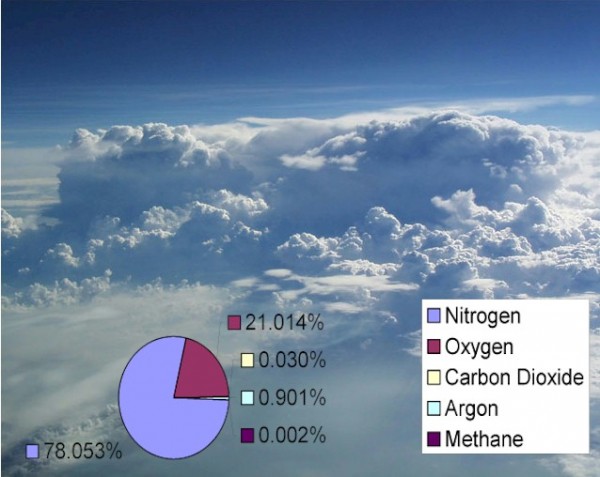
Image credit: Fayette County Public Schools, http://teach.fcps.net/immex/.
1.) Since you talked about Helium : What is the value of nitrogen in air for the body?
You might think "not much" at first; the nitrogen transferred into our blood through our lungs doesn't play much of a biological role, whereas we need oxygen for some of our most vital biological functions. But that doesn't mean we'd be happier if our atmosphere were 100% oxygen; quite to the contrary, we'd start suffering from some intense problems almost immediately. You'd accumulate fluid in your lungs, damage your pulmonary capillaries, experience chronic chest pains, reduce the amount of oxygen absorbed into the blood, and experience the collapse of many of your alveoli. Because your body doesn't just need oxygen, it needs oxygen at a specific pressure, and if you breathed 100% oxygen at normal atmospheric pressure, these are the side effects. If you breathe oxygen at an enhanced pressure it gets even worse, and can result in nausea, dizziness, muscle spasms, and even seizures and convulsions. The way to fix this, if you want to breathe 100% oxygen, is to do so only at reduced pressure, which is what the Gemini and Apollo astronauts did. So the nitrogen in the air regulates the relative pressure of oxygen in your lungs; tinker with the balance at your own peril!
2.) If faster-than-light communication worked, would there be a time-dilation in communication if one point were moving relativistically relative to the other?
So -- first off -- it doesn't. There is, as far as we understand the laws of physics and the fundamental particles that exist, there is no faster-than-light communication. But this question represents a deep problem with why: if there were faster-than-light anything, then all of a sudden the notion of "events," as in, what came first and what came second, is entirely dependent on how quickly and where you're moving. If faster-than-light communication were possible, then it would also be possible to receive a message before it was sent. This is both impossible for obvious reasons, but also because special relativity forbids it. And happily so.
3.) I'd love to know once and for all why Inflation precedes the Big Bang and not the other way around?
Briefly, the Big Bang is the idea that if you extrapolate further back into the past, the Universe was hotter, denser, smaller, and higher in energy. But you cannot go arbitrarily far back; there is an observed upper limit to what the energy density was in the past. You can also ask the question of whether anything could have happened to set up the Big Bang, and whether that thing would make any new predictions. That's what inflation is: the thing that preceded and set up the conditions that were present at the earliest times where the Big Bang model matches up with our physical reality, and that's why inflation precedes the Big Bang and not the other way around.
4.) How hard is it to confirm or refute that North Korea sent up a satellite?
It's very easy if you're watching, and very hard if you're not. A little more nuance: if you can't catch them in the act, it becomes much easier to tell the sooner you find it, and becomes much more a game of detective-work the later you first find out about it. In this particular case, the evidence is pretty overwhelming that they did, but it would be much easier if we were continuously monitoring them from, say, geosynchronous orbit.
5.) How do we know there is more than the observable Universe, and do we know what's beyond it?
By measuring the curvature of the Universe on the largest scales, we can determine whether it's curved or not, and if it's not, what the limits on curvature are. Through precision observations of the Cosmic Microwave Background, we've determined that if the Universe does close in on itself again, its physical size is at least about 150 times larger in radius than our observable Universe is. Based on the isotropy and homogeneity of what we see, it's very reasonable to assume that beyond our observable Universe lies more Universe, indistinguishable from our own. More information here in this previous post.
6.) Have you seen the new CERN LHC Zombie movie, made by Ph.D. students?
No, I haven't. But you can watch it here, if you're interested. At some point years ago (maybe 2007 or 2008?), fellow cosmologist Robyn Levine made a zombie-attack video where a zombified version of myself attacked and ate a random stranger outside of the AAS meeting in Austin, Texas. But that's as close as I've come.

Image credit: Olive Juice of http://greenlightcard.wordpress.com/.
7.) What is the source of Inertia?
Inertia, as we commonly use it, is a measure of how difficult it is to change an object's momentum. If something is at rest, how difficult is it to accelerate it, and if something is in motion, how difficult is it to change that motion? For practically all terrestrial applications, this is the same as an object's mass. So if you're asking what the source of inertia is, it's mass. If you're asking "where does mass come from," you can either blame the Higgs field and quantum chromodynamics, which is responsible for the mass of matter in our Universe, or baryogenesis, which is what created the matter that we're made out of today.
8.) Can quantum mechanics explain both the universe and the human brain/consciousness?
Quantum mechanics doesn't explain the Universe so much as govern it. Some of the laws of physics are quantum mechanical in nature, and this applies to all particles and interactions in the Universe. It applies to the Universe and to the human brain equally. There are some phenomena in the Universe which require quantum mechanics to work (such as nuclear fusion in the Sun), and other phenomena for which quantum mechanics has no bearing (such as the orbit of the Sun around the galactic center). It is open to debate which category human consciousness falls into (i.e., we don't know yet), but from my perspective, we would perceive ourselves to be conscious even in the absence of quantum mechanics.
9.) We refer to the universe as expanding or contracting as if it's finite thing. If it's doing either, what are the theories of what lies beyond our Universe?
It is expanding on large scales: groups and clusters of galaxies are expanding away from one another, moving farther and farther apart as time continues on. On small scales -- within gravitationally bound groups and clusters -- it is contracting in the sense that gravity will bring those objects together, resulting in mergers, in the future. On even larger scales than our observable Universe, there is simply more Universe, governed by the same laws as our own. People speculate about an even bigger scale, where there may be regions with different laws of physics, and where the Universe there is vastly different from our own. But these speculations are not based in our current understanding of physics, and have no evidence to support them. It doesn't mean they're wrong, but it means they're beyond the scope of science right now. I'll stick to my answer from question #5.
10.) If we look in different directions, is the age [of the Universe] different? If not does this imply we are at the epicenter of the big bang?
The age of the Universe -- and every measurable property of the Universe, in fact -- appears to be the same in all directions. This is what we refer to as "isotropic," and this observation tells us that the Universe has no preferred direction. When we combine it with the observation of "homogeneity," or the fact that the Universe has the same apparent properties in all locations in space, it implies that all observers in our Universe would conclude that the age of the Universe is 13.7 billion years old, that it's expanding with them (apparently) motionless at the center. But this is only an apparent illusion; isotropy and homogeneity in the context of general relativity ensures that there is no epicenter to the Big Bang, but rather that it occurred everywhere simultaneously 13.7 billion years ago.
11.) Who is John Galt?
The worst radio personality of all time, not in fact but in fiction. Those 100 pages at the end of Atlas Shrugged where he delivered his interminable soliloquy were some of the most painful I've ever read.
12.) In a one on one. Who would win? You or that Tyson guy?
I assume by "that Tyson guy" you mean this Tyson guy. I saw him in the Atlanta airport just last month and he was really nice, posing for photos with every passerby that wanted one. I'm younger, I'm in pretty good shape and I still have two ears, but I'd stand no chance against Iron Mike, and I know it.
Oh, that Tyson guy? He used to wrestle in college; that would actually be a potentially interesting bout. Put it together and we'll donate all the proceeds to charity, and then we'll find out!
13.) It's my understanding that the Earth's iron core helps to protect us from radiation from the Sun. If so, how?
It's not so much that we have an iron core as much as we have an active core with a magnetic dynamo inside! This produces the large magnetic field at the surface of the Earth that's sufficient to shield the Earth from high-energy charged particles emitted from the Sun. (Charged particles are bent by a magnetic field, and in the case of the Earth, our field bends particles that were headed straight towards us safely out of our way.) Without it, the Sun would eventually strip our atmosphere away, which is what we think happened to Mars, and why its atmospheric pressure is only 1/140th of what Earth's is!

Image credit: NASA, ESA, G. Illingworth, D. Magee, and P. Oesch (University of California, Santa Cruz), R. Bouwens (Leiden University), and the HUDF09 Team; stitching of the HUDF and the XDF fields by me.
14.) When did you realize you wanted to study physics/astrophysics as a career? What would you be if you weren't a physicist/professor/teacher?
When I was a senior in High School, I was in A.P. Physics, and hated it. Our teacher always showed up underprepared, and I felt like we weren't learning any of the interesting things that the Universe had to offer, while my A.P. Chemistry classes had us studying electron structure of individual atoms and molecules. It was only in college that I realized that I did love physics, but I was fooled by a bad (for me) teacher. After I graduated, I taught High School, and it was while I was working in a job that I liked (but didn't love) that I realized exactly what it was I'd rather be doing: learning in-depth about the physical Universe on the largest scales. I started graduate school in 2001 and I've never looked back. There are lots of other activities I enjoy and could have been happy doing, but I'm sure I'd choose astrophysics and cosmology all over again if I had to do it once more.
15.) How do John Stewart Bell's "Six possible worlds of Quantum Mechanics" hold up today?
I have no idea. I have never encountered this essay, but I have tremendous respect for Bell's work as far as the development of quantum mechanics goes. I've never found any appeal in alternative "interpretations" of quantum mechanics beyond Bohr's original Copenhagen Interpretation; if they help you wrap your head around understanding what's physically going on, by all means, investigate them. But no alternative offers any advantage as far as physical predictive power goes, and so I go with the easiest one to wrap my head around, which was the first one I learned.
16.) How do physicists use the residual (CMB) radiation from the Big Bang to interpret the age of the Universe?
The beautiful thing about physical cosmology is that if you know what the Universe is made up of now, which is one of the things we learn from our great cosmic observations such as the CMB, large-scale structure, and distant supernovae data, and you also know how it's expanding today, then you can figure out the entire expansion history of the Universe, including the amount of time that's taken place since the Big Bang. Our "mix" today, of 4.5% normal matter, 22% dark matter, about 0.008% photons and the rest in the form of dark energy (adding up to 100%), combined with our measurements of the expansion rate of the Universe and the laws of General Relativity tightly constrain the age of the Universe to be about 13.73 billion years old. If the expansion rate is off by 2% then our age estimate is as well; if the CMB data indicated 5% more dark energy and 5% less dark matter the age would come out to just over 14 billion years, so it's a very tight system.
Conceptually, we know what it's doing now and what it's made out of, and given that we understand how the Universe expands, there's only one possible answer for the age of the Universe. Figuring it out from that is fairly straightforward; any properly educated physics or astronomy grad student could do this in their first year of studies.
17.) How does a black hole interact with the Higgs Field?
Come up with a working theory of Quantum Gravity and I'll tell you. Seriously, physics breaks down before you get to the theoretical singularity of a black hole; at this point in time that's not a question that physics has an answer to.

Image credit: Aaron Galloway of http://1023blakefm.com/.
18.) If I microwave a whole egg, it explodes. If I boil one, it doesn't. Why?
This is a chemistry question, but one that I know the answer to. When you boil an egg, you cook it via heat transfer from the outside in. The chemical change that takes place in an egg that causes it to go from liquid to solid take place slowly in that environment, solidifying the egg inside without damaging the shell. (Conventionally, this is hard-boiling an egg.) However, the molecules inside the egg never exceed the temperature of the water they're in, and thus the water molecules inside never boil. But when you microwave an egg, you increase the speed of the water molecules in the egg until they actually exceed water's boiling point, and when you go from liquid-to-gas, the pressure inside the egg becomes too great for the shell to handle, and it explodes. You can test this by microwaving a hard-boiled egg; it still explodes. (I am not responsible for cleaning your damned microwave when you do this!)
19.) Is our universe expanding out into an empty area?
A common misconception is that our expanding Universe is expanding "into" something; it is not. Imagine you have a rubber sheet, and you stretch it to be a 1'x1' square, and you glue a few coins down onto it. Now you stretch it further, and it becomes a 2'x2' square. Our galaxies are like the coins, and the rubber is like the space, but the coins aren't expanding "into" anything; it's space itself that's expanding. Just as the rubber sheet exists in our higher-dimensional Universe, our 3-D space (+ 1-D time) could exist in a higher-dimensional spacetime (5D or higher), but that's certainly not a necessity!
20.) Do you think we will experience the singularity in our lifetime, and will it be positive or negative impact on science?
No; I do not think we will experience the singularity. Not during our lifetimes, and possibly not ever. The number of calculations-per-second will increase but not arbitrarily far into the future; physics has limits and so does information that can be calculated in a finite amount of time, even theoretically. Our feeble understanding of intelligence makes me very pessimistic about the technological singularity, both in our lifetimes and, conceivably, ever. If it does happen, sign me up at the end of my life to be downloaded into a computer, where I can enjoy a Moriarty-from-ST:TNG existence for all eternity.
21.) How is it possible for the energy density of empty space (e.g., Einstein's cosmological constant) to do both, accelerate and make the universe stationary?
A cosmological constant is an energy inherent to empty space itself, a zero-point energy that is by definition non-zero. Unlike most forms of energy density, it has a negative pressure, which means that even though it has a positive energy, it causes spacetime to expand outwards. When Einstein first introduced it, his thought was that the Universe was static, but if it was filled with matter, it would collapse under the force of gravity. If the cosmological constant were tuned to just the right value, it would prevent the Universe from collapsing and keep it static. With the (modern) measured value of the cosmological constant (and the fact that the Universe is expanding, not static), we now known that it's greater than that critical value, and thus it causes the Universe's expansion to accelerate.
22.) Will the Universe end in a Big Rip?
No. If dark energy is a cosmological constant -- which it is, by all measurable indications -- then no, there will be no Big Rip. There will be no turnaround, either, or a Big Crunch; there will be no cyclic behavior, or a Big Bounce. These all rely on a form of Dark Energy that changes over time, something that the suite of data we have about the Universe does not show. These are fun ideas to speculate about, and they come with interesting theoretical consequences, but let's remember that the data is the ultimate arbiter of cosmology, and they best support a fate of indefinite expansion; no more, no less.
23.) Can you go over the multiverse theory a little more in depth?
This is as good as you're going to get. There is too much background to summarize in just a paragraph, but let's just say that in inflation, new regions of spacetime get created more quickly than inflation can end, and so even though our Universe may be infinite, there's an even bigger infinity out there that's still inflating.

Image credit: Lanru Jing, from http://www.sciencedirect.com/science/article/pii/S0165125007850061.
24.) What if Einstein was wrong and in fact we do live on an uber-large cylinder?
Our Universe is observed to be flat, topologically, and to have no repeating regions in it. If we do live on a very large cylinder, then the cylinder is sufficiently large that it is observationally indistinguishable from a Universe that is also spatially flat but not a cylinder.
25.) Does it not strike you as a bit odd Ethan that while Dark Matter is NOT evenly distributed in the Universe but Dark Energy IS, that professionals in your field think we'll have the answer to the secret of Dark Matter first?
No. No it is not odd, and in fact it's a very smart bet to make. Dark Matter has the potential to (although it doesn't necessarily have to) interact in some non-trivial way with normal (baryonic) matter. If it does this, we will detect it directly, eventually. Dark matter does interesting things: it clumps, it was created at some point, and it may interact with itself or be able to be created in accelerators. With dark energy, there is no such possibility. Dark energy is (to be frank) a stupid name that we gave to an observed phenomena (the accelerated expansion of the Universe) that we have no idea how to detect directly. I am optimistic that we may find dark matter in my lifetime. I am pessimistic that we will understand dark energy any better than we do right now -- maybe we'll tack a few more significant figures on how indistinguishable it is from a cosmological constant -- for generations to come.
26.) What do we see or currently predict in terms of large-scale electromagnetic effects on the cosmos?
They are negligible when compared to gravitational effects, but they are responsible for galactic-and-stellar-scale magnetic fields that are very interesting. Because the Universe is so electrically neutral (to at least one part in 10^43!) and charge separations are very difficult to maintain, gravitation is always the most dominant of the major forces on large scales, and the larger the scale you're dealing with, the more important gravity is relative to the other forces. I should know, I wrote papers on it and it was an integral part of my Ph.D. Thesis!
27.) I want to know how far away the farthest galaxy is. And where it might actually be right now, given that we are looking billions of years into the past.
The farthest galaxy we've detected so far is at a redshift of 11.9, which means the Universe was only 380 million years old when the light we're observing now from it was emitted. Right now, this galaxy is some 32.9 billion light years away, thanks to the expansion of the Universe, but there are going to be galaxies and proto-galaxies even farther away than that; the James Webb Space Telescope will undoubtedly find them! In theory, the farthest galaxy will be close to 46 billion light years away, which is the radius of the observable Universe.
28.) The universe has zero net energy, provided that the universe is completely flat. What does a flat universe mean?
“They say ‘A flat ocean is an ocean of trouble. And an ocean of waves… can also be trouble.’ So, it’s like, that balance. You know, it’s that great Oriental way of thinking, you know, they think they’ve tricked you, and then, they have.” -Nigel Tufnel
Let's ignore the "zero net energy" part, since energy is not even defined in General Relativity. To be flat, that just means that spatial curvature -- whether the spacetime Universe is positively or negatively curved -- is indistinguishable from zero. Which is what we observe. Hence, the Universe is flat.
29.) Could you give us a view on the way we are able to look back billions of years in time when looking at distant stars?
The Universe is a finite age, and light takes a finite time to travel. Anything we look at is only as old as we are, minus the amount of time it took light to travel. So if we're 13.73 billion years old and we're looking at the Moon, the Moon is the same age as we are, minus about 1.3 seconds. If we're looking at a star 800 light years away, that star is the same age as us, minus 800 years. And if we're looking at a galaxy who's light has been traveling towards us for 12 billion years, then we're seeing that galaxy when it's the same age as we are, minus 12 billion years. Eventually, this gets to be significant!
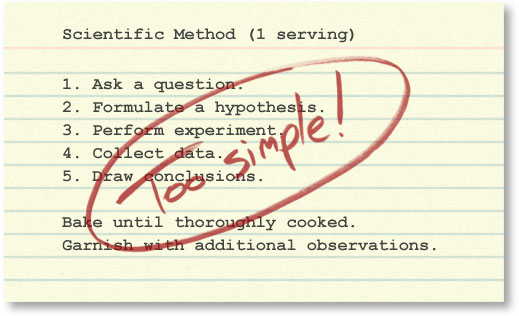
Image credit: http://undsci.berkeley.edu/article/howscienceworks_01.
30.) If math is an abstract system that exists in our minds, why do the predictions of those rules agree so amazingly well with the physical world?
Because science works! It's actually the other way around, to be honest. You can imagine a Universe that didn't obey scientific rules: where gravity accelerated objects downwards at 9.8 m/s^2 one moment and didn't work at all the next. Where your atoms held together in the form of a human being one day and simply ceased to do so another. We're not at the point where we can derive the laws of physics purely from mathematical principles; that isn't how physics works. The math is a guide that provides self-consistent possibilities for what could happen, and the physics -- the physical world -- is the ultimate arbiter. If the predictions of those rules didn't agree with the physical world we'd live in a Universe of total chaos, where unpredictability was the rule and there were no exceptions. But, for whatever reason, we're lucky, and the Universe appears to obey the same rules everywhere we look, and at all times.

Image credit: Alien, Resurrection (1997), via http://www.filmedge.net/alien/photos.htm.
31.) If we ever make contact with sapient alien life, who do you think will be better looking, us or the aliens?
To us? We will. To them? They will. Hopefully they've evolved to be attracted to their own species, just as we've evolved to be (mostly) attracted to our own. I hope.
32.) Is the Moon visible in the sky during more daylight hours or during more nighttime hours, and why?
On average, the Moon is visible during 12 hours out of every day. During months where days are longer, it's preferentially visible more during the day, and during the months where nights are longer, it's preferentially visible more during the night. Over the course of a year, it's visible for six months, where 3 of those occur during daylight hours and 3 occur during night hours. However, the Moon is much more easy to see at night when the Sun isn't illuminating the sky, and so we associate the Moon with night much more freely than we associate it with day, even though it spends just as much time in the daytime sky over the course of the year.
33.) Is it really possible for 'technologically superior' alien overlords to convert the planet Jupiter into a star?
Sure. Just introduce it to about 40-to-80 more Jupiters (depending on whether you'll settle for a brown dwarf or want a full-blown M-star) and let gravity do its thing. You'll get a star as a result, but that's really a lot of effort for such a paltry result.
34.) How old were you when you wrestled your first bear?
Uhh... well, someone did make this picture of me a little over a year ago...
...does that count?
35.) What planet has the lowest average distance from the Earth?
This is actually a fun one! Venus gets closest to the Earth when we swing by it, but Venus also gets farther away from us than Mercury does during half of the year (on average). It turns out that -- if we're willing to take an average over long (greater than 1 year) times -- Mercury and Venus are practically tied for the average distance from Earth, and although the Sun isn't a planet, it's tied with them, too. (The outer planets then go in order: Mars, Jupiter, Saturn, etc.)
If you want to get slightly more technical, because of the mathematical geometry of circles, the Sun has a slightly lower average distance to Earth than the planet Mercury does, and Mercury has a slightly lower average distance than Venus; this is completely due to the fact that circular (or elliptical) orbits have greater distances from us than the Sun does when they make a right angle with respect to the Earth/Sun system. But this answer is only correct averaged over long periods of time; over (somewhat) short timescales, sometimes Mercury's the closest, sometimes Venus is, and sometimes the Sun is.
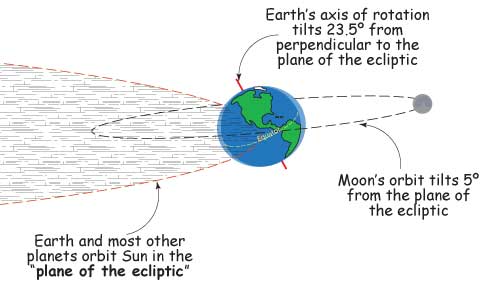
Image credit: NASA's "SciJinks", http://scijinks.nasa.gov/tidal-curiosities.
36.) What would be the effect of solar tides to the Earth-Moon system if Earth got tidally locked against the Moon?
This is a false question, and very dangerous! The Moon is an insufficient mass to tidally lock the Earth to it; if the Earth appeared to be tidally locked to the Moon it would be a temporary, transient condition, and tidal friction would continue to decelerate the spin of the Earth and lengthen the day. Sorry, Luna, you're out of your league here.
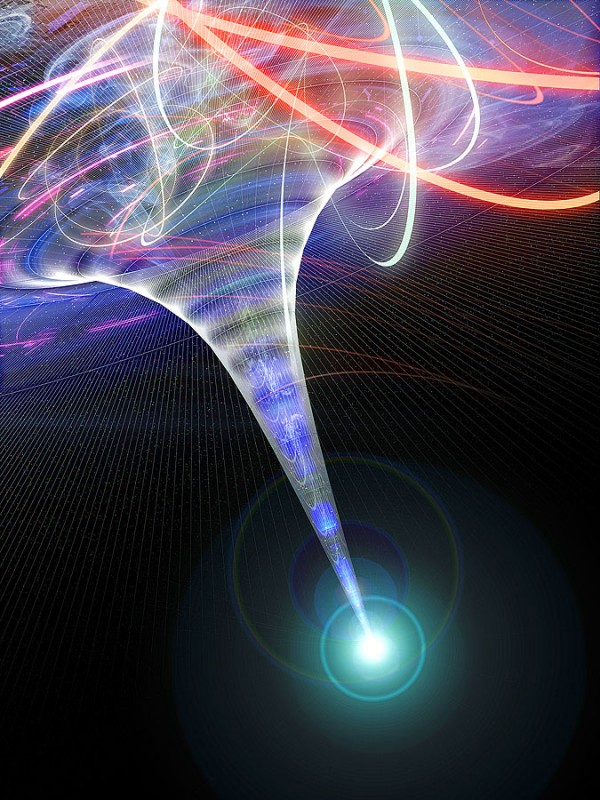
Image credit: from http://www.mondolithic.com/.
37.) Is it possible for a black hole's singularity to undergo inflation and form another Universe?
I don't have enough evidence to say no, but I'm not going to be the one to venture inside to find out!
38.) If the Universe is so old why are there so many blue stars?
Because there's still plenty of Hydrogen, and as long as there's enough hydrogen to form new stars, any star more than about twice as massive as our Sun will be blue for the main stage of its life. The double cluster in Perseus, above, is estimated to be less than 6 million years old, which is a blink-of-an-eye for a 13.7 billion year old Universe.
39.) Let's build a rocket. Stock it with everything a man may need in their life, man it with newborn child, and launch it with acceleration of 1g. Let's assume we have a power source, technology, and CMB shield, which allows to maintain that acceleration for a lifetime. How far will the rocket get until the man dies in the age of 70?
If you did this for about 30 years, you could reach any galaxy in the Universe out to a redshift of about 4 or 5, which is where galaxies "red out," or are already receding away from us faster than the speed of light. Time will pass normally for you in the ship, but by that point, billions of years will tick by with each day for you, and you'll observe the Universe disappear around you even as you whiz through it. It's a simultaneously glorious and horrifying way to spend your days!
40.) We seem to need dark matter and dark energy to make our current equations match what we see for now. Is it possible to associate both 'dark's with one common field, e.g. where positive fluctuations would be dark matter and negative fluctuations would be dark energy (or vice versa)?
No; they are too different from one another. Dark energy appears to be a constant throughout the Universe, and it exists where there is lots of dark matter, small amounts of dark matter, and no dark matter at all; the dark energy density appears to be unaffected by anything else in the Universe! Dark matter, on the other hand, clumps gravitationally, and so it is interesting to think of it as a field or a collection of particles. But the two do not appear to be connected, other than they both have "dark" in their names.
41.) If you aimed the Hubble Telescope, or a telescope of similar power at Earth, what would you see?
Hubble has a 2.4 meter primary mirror, which means that it has a diffraction-limited resolution of 0.05 arcsec, or 0.000014 degrees! Ignoring atmospheric distortion and overexposure from light, we can figure out the resolution of such a telescope. From low-Earth orbit, about 560 kilometers up, that means it could resolve objects down to a size of about 14 centimeters, or just under 6 inches. Of course, it's field of view is so terribly narrow, and it flies over the Earth so quickly (it makes a complete orbit in less than 90 minutes) that it's impractical for looking at Earth. But if we wanted to design an instrument to do so... we could spy on people with incredible resolution. (And we're likely doing so; remember those two free Hubbles that were just gifted to NASA? Where do you think they came from?)
Thanks to everyone who asked such great questions; it never hurts to be curious! If you've made it this far, please comment and tell me which question, in your estimation, should win, and I'll pick the winners for the Planetary Society's great calendar based on your recommendations at the end of the weekend. (One vote per commenter, please.) Thanks as always for your interest in learning about the Universe; I'll keep doing my best to share all I know and all I love about it with you!





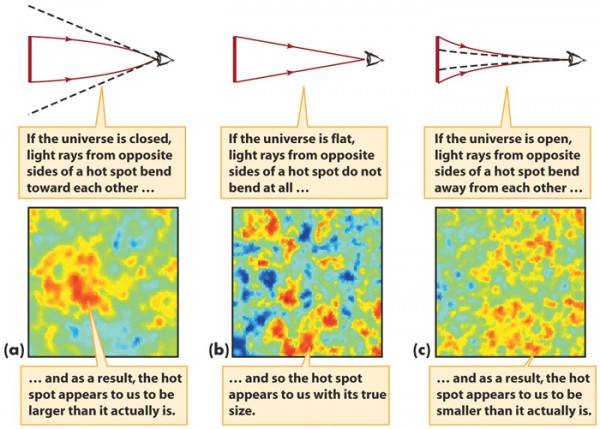

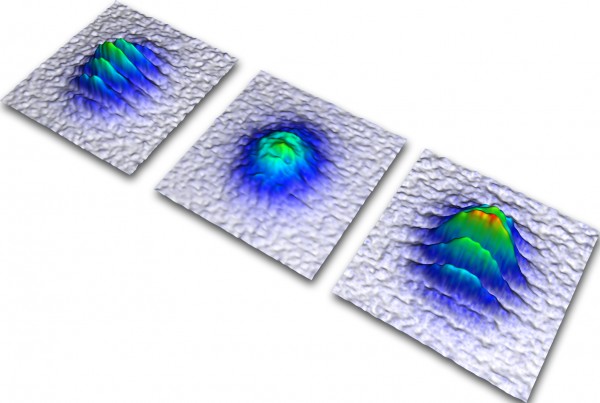

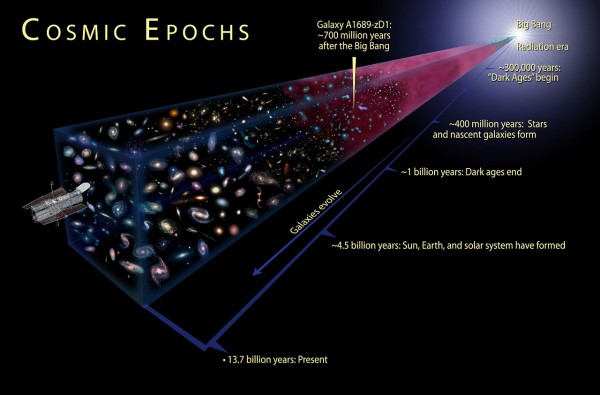


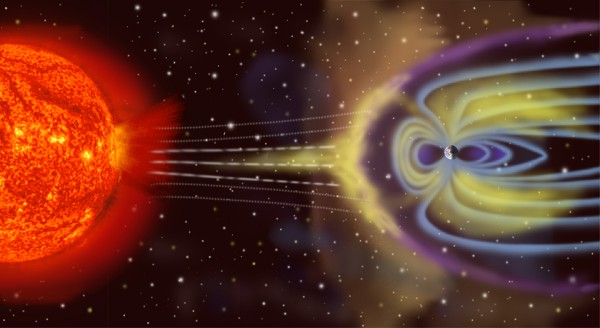
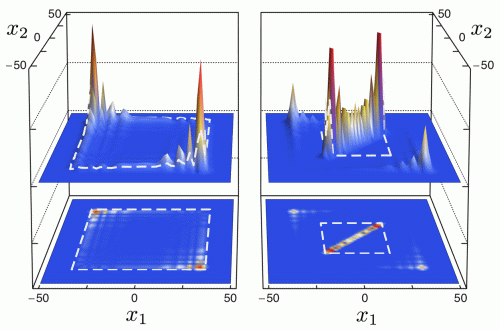
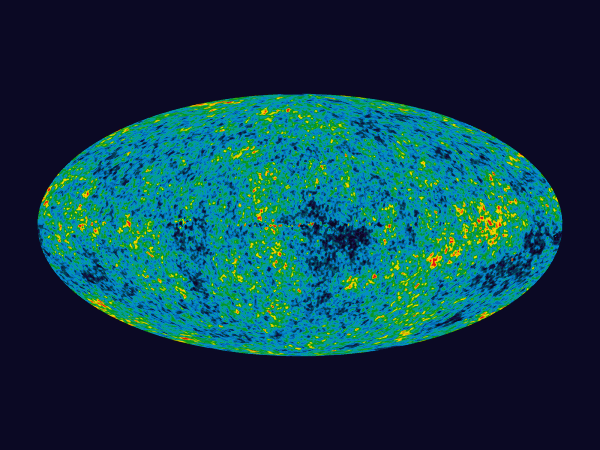
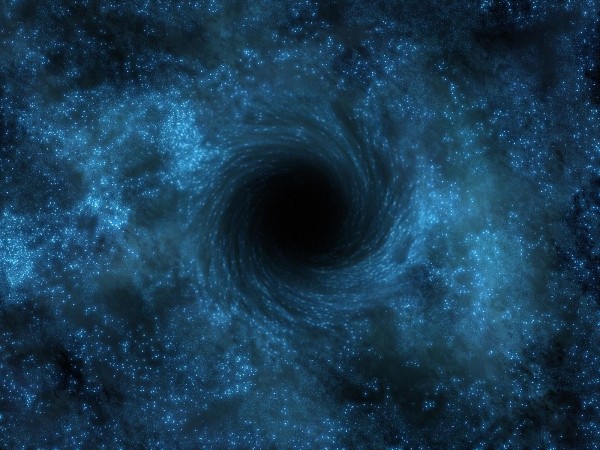

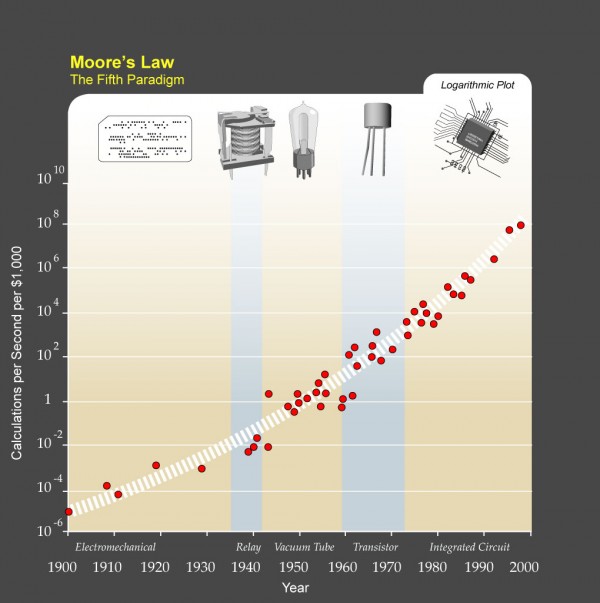
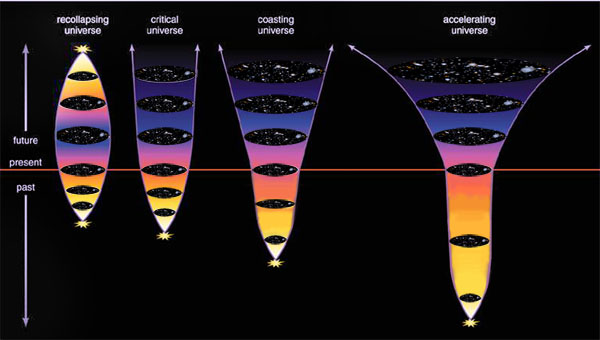
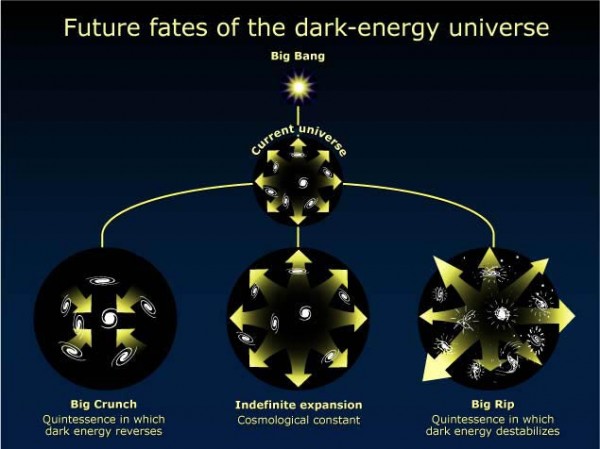


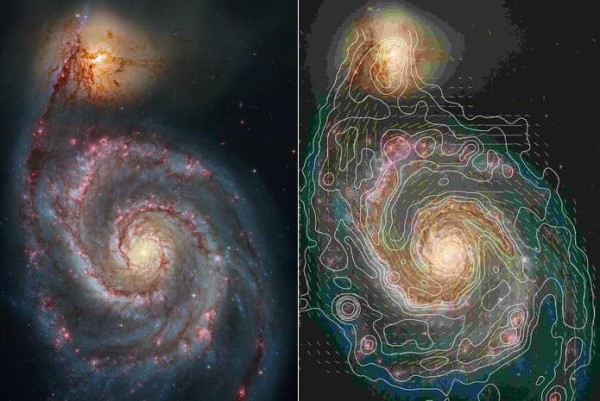
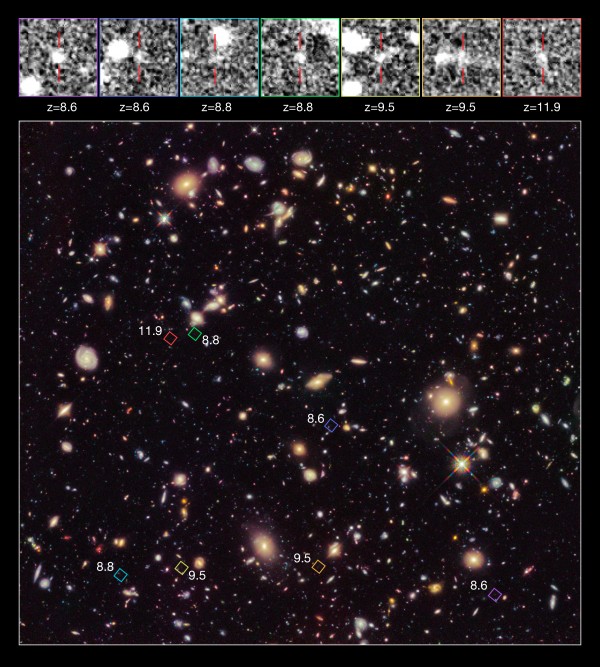

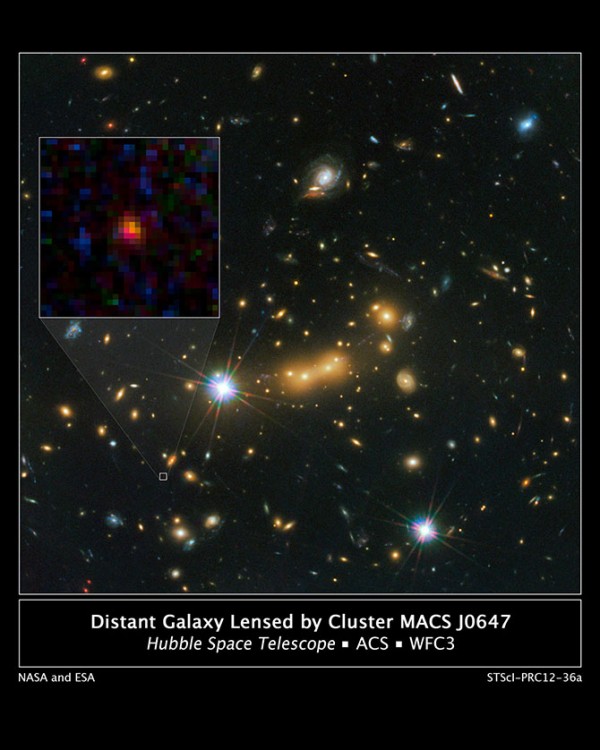



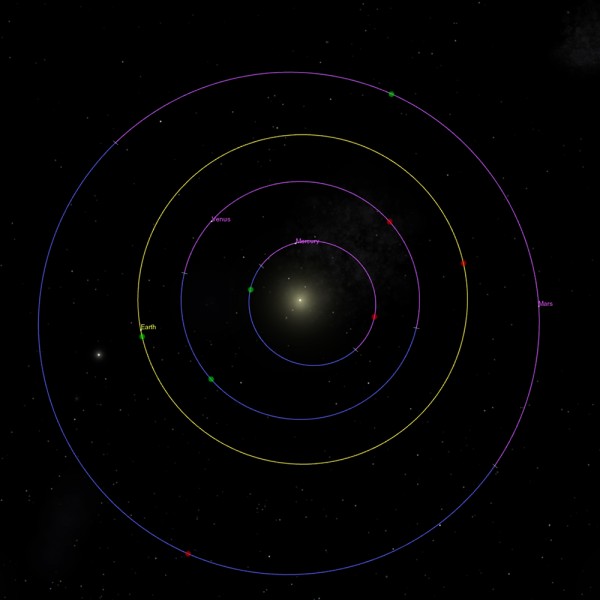
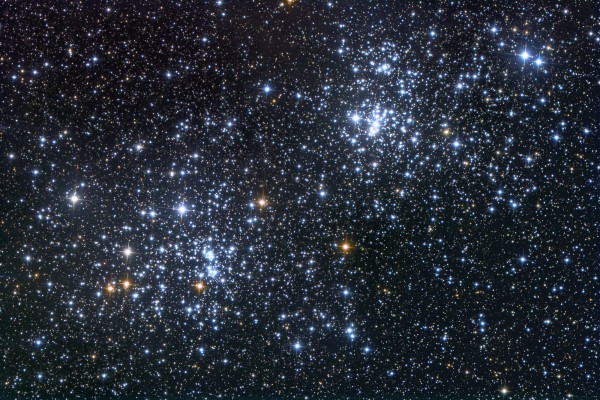
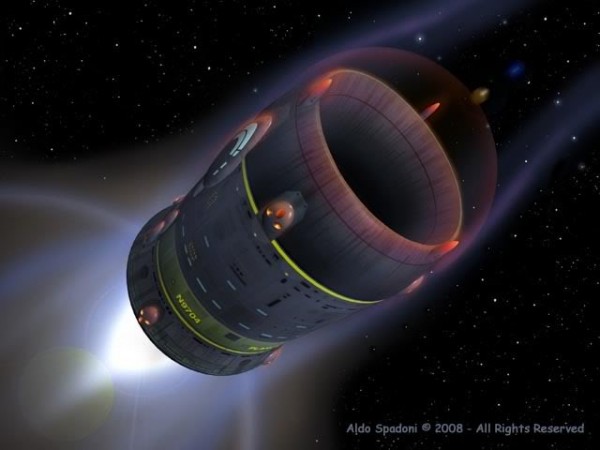

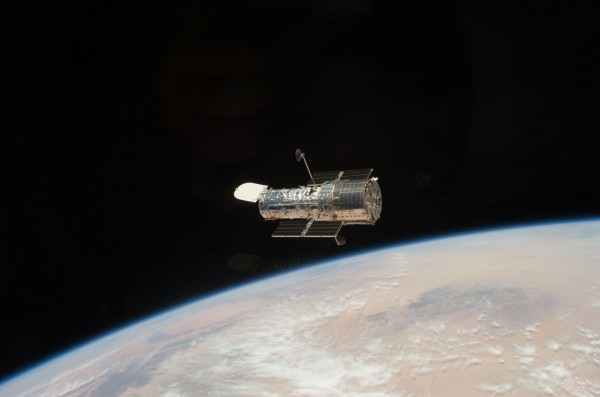
Ethan, in question 2, you put a pretty heavy boot on the notion of faster-than-light communication. Doesn't quantum entangling, which has apparently been demonstrated in labs, contradict this? How does the "spooky action at a distance" come into this?
That was fun,Ethan. Thanks. Honestly, all the questions and answers were excellent, except the one about you wrestling the bear. You know the bear lost to the wolverine living in your beard when you were 8.
Question 37...just because it leaves the door open!!!
Nice work Ethan...love your style!...humor and knowledge..such a good mix!
Darn it. I wanted to ask why the sky wasn't violet instead of blue. That's the price I pay for being off line for a couple of days.
Guess I'll have to google it.
I like Q5 the best because I'm so puzzled by this. Does the answer imply that unlike the 13.5 to 15 billion year old universe I've heard so much about that the universe is far older than that?
This was a great post to read, Ethan! I hope you enjoyed making it, because then you'll do it again soon.
Regarding question 33, I can only assume that the reader was referring to the climactic moment in Clark's "2010", when the monolith is used to turn Jupiter into a star. However, that wasn't done by increasing Jupiter's mass (which would presumably wreak some havoc with the rest of the solar system), but rather by artificially increasing the density of the planet until the hydrogen ignited. So now I'm wondering if THAT would possible? If some wildly advanced technology compressed Jupiter enough, could it turn into a star?
My gut says probably not -- that the stellar radiation would blow the upper atmosphere away (since it doesn't have the gravitational pull of a regular star) and it would therefore run out of fuel soon afterward. Or maybe it would run out of pressure first? Either way, it wouldn't be a star for long.
But I'm not an astrophysicist, so this is just an educated guess. Ethan?
This question and answer potpourri is a rare year-end treat for signing off of 2012
Artor, I meant to put the boot on FTL communications as strongly as I did. It is very important to note that there is no transmission of information in those entanglement experiments. "Spooky" action at a distance is just what I call "quantum mechanics." It's not supposed to be spooky to physicists, and if you are a physicist and it still feels spooky to you, you should seriously solve some more quantum mechanics problems.
Dave W., thanks for letting the secret out. Now everyone knows. Good thing no one reads blog comments. :-)
kim, Thanks!
Dave, there's about as much violet light as blue light coming from Rayleigh scattering to your eyes. Sunlight itself has slightly more blue light than violet light but the atmosphere Rayleigh scatters violet light somewhat more efficiently than blue light; as a result, your eyes receive roughly equal amounts of violet and blue light that human vision is sensitive to. Your eyes process all of that information as the color of the sky, and that's what looks blue to you.
Q5 doesn't imply that the Universe is older than we can perceive; that stuff came from the same "Big Bang" we did. But inflation does imply that the age of the Universe is at least 10^-35 seconds older than it would have been without it and at most infinitely older. Now, *that's* some uncertainty!
Brian, the only way that would increase Jupiter's core temperature to temperatures sufficient to ignite fusion in a sustainable way (i.e., to turn it into a star) is to pile more mass onto it. If you raised density adiabatically to increase the temperature to ignite fusion -- in other words, if you compressed it in a way that raised the temperature -- the lack of gravitational binding energy (due to the small mass) would blast the Jupiter-mass object apart, and at the very least fusion would cease. And at most it would be completely destroyed. :-)
Anadaram, Cool! I'm glad you like it.
@Artor: Quantum entanglement doesn't contradict the no-FTL-communication aspect of special relativity, because it can't be used for communication. If an ensemble of entangled systems are prepared, and the two "halves" of each instance (speaking in a semiclassical sense) are measured by independent and causally-separated observers, then each observer will collect data (a distribution of measurement outcomes) which is consistent with simple quantum mechanics for the observed "half".
It is only if those two observers bring their information together (which they have to do by communicating normally/classically/STL), that they can then construct a set of _joint_ measurement distributions, and see that those joint measurements violate the expectations of classical probability, and instead match Bell's inequalities.
Put another way, the actions of a remote observer on part of an entangled system do not directly affect the measurements made by an observer on the other part of that system. What is affected are the correlations between measurements made by both observers on the two halves together.
Michael, that was a much better explanation than mine; nice!
@Ethan: Thanks! I've been appreciating your own explanations for a while now -- especially the many lines of observational evidence for dark matter (I'm still learning my astronomy...).
#27 produced the answer I've learned the most from;
#26 gave me a chance to read your thesis - thanks! Some interesting facts/theories/observations/conclusions for me to learn as well.
Questions 5, 22, 23, 28, 35, 39, and 41 are good ones too, well worthy of a full blog article themselves.
Thanks Ethan!
Hi Ethan,
First of all, thanks for answering all the questions, it was really fun reading all the answers, and as always I learned something new from your post.
I think all the questions are very good and deserve to win, but my vote goes for Q16, mostly because it is the question I've been wondering about for a while now.
Cheers
I KNEW IT!
But seriously - great set of answers. I'm partial to my own question (and you did say it was surprisingly fun). If I'm ever MC'ing a trivia night, I'm definitely incorporating this.
Hi Ethan,
The "Cosmic Epochs" graphic in Q 10 seems to imply that the Sun, Earth and Solar System formed ~4.5 billion years after the big bang, instead of, you know, ~9.2 billion years after the big bang. This confused me the first time I saw it, but clearly the artist is measuring from "the present" backward.
I am fascinated by the cosmic epochs because it seems that life on Earth started at the very beginning of the epoch in which complex life is even possible, in a universe that may be more-or-less in its current form a trillion years from now. How incredible is that?
Love your posts.
#11 I've said the exact same thing, I don't know how many times, to I don't know how many people and have never gotten agreement. Which makes me think most people who 'say' they've read it, haven't!
Here's the question I wish I had asked....
We've all seen the Feynman diagram illustrating electrostatic repulsion between two electrons, as "mediated" by a (virtual) photon jumping from one electron to the other (the conservation of momentum explains things)...
But how does this work for electrostatic attraction? How does a photon mediate attraction?
Thanks Ethan. I vote for # 10, because it cleared up my biggest misconception. I'm still trying to wrap my brain around the idea in # 28 of a flat universe. I've always visualized it as a sphere.
#39 let's build a rocket!
I'd LOVE to see the exact calculations you did to work out how far the rocket could go in 30 years.
Also, you said that you couldn't see the value of any other interpretations beside the Copenhagen one, but what about Feynmans sum of paths one? Don't you like it? It seems wonderful to me.
I love this blog, it's like Bad Astronomy (the blog) on steroids! Keep up the good work.
@Como: You need to be a bit careful with the labelling "start of complex life". On the one hand, since we only have one sample point, there's a bit of circularity in assuming that our case is either "typical" or "initial". After all, we could as well have assumed that 4.5 Gya was also the earliest time a solar system could have formed (since ours was the only one we knew about).
On the other hand, if abiogenesis (the formation of self-replicating organic systems from non-living precursors) is as common as chemistry implies (c.f. the Miller-Urey experiment and successors), then it does make sense that life would appear as soon as the necessary conditions were met. On our own planet, for example, we find evidence of life in the earliest known sedimentary rocks (rocks deposited in liquid water and not subsequently melted).
You should have done one more question.
"What is six times nine?"
Q9
thanks, do it again soon.
I'm partial to the silly questions and silly answers. But the real winner is the planet with lowest average distance from Earth. It's something I never knew. Thanks, Ethan. Great read.
@Como: there is a 'latest earliest' point for life. It would have to be after initial star formation since you need fusion in stars to create elements heavier than hydrogen, helium and lithium. If we assume elements at least as heavy as carbon (6) are needed to form complex molecules, the 'latest earliest' date can probly be calculated to some useful degree of precision. Interesting, and it appears to be a chemistry thing, beryllium (4) and boron (5) don't seem to do the trick.
I'm appalled that no one asked you what phase two is!
http://www.alaskacommons.com/wp-content/uploads/2012/10/UnderpantsGnome…
#39 because it hurts my head trying to picture a disappearing universe.
About the question:
'What is the source of inertia?'
At this point in time we don't have the means to address that question.
My understanding is:
What is attributed to the Higgs field is that it imposes an energy cost on a particle to exist at all.
It's my understanding that the rest mass of particles (that have rest mass) corresponds to the energy of the energy cost for existing at all.
The source of inertia falls outside the scope of Higgs field physics.
Jim Pivarski formulated it as follows:
"This potential provides an energy cost to exciting the electron field from a zero-electron state to a one-electron state. This energy cost is the mass energy, and Einstein’s relationship between energy and mass takes over from there."
http://cornellmath.wordpress.com/2007/07/25/the-origin-of-mass/
So the answer to the 'source of inerta' question is that we only have the universal obviousness that inertial mass is _required_ for inertia. But as to source of inertia: we don't have the means to even address that concept.
Here's a contrast that I find peculiar:
On one hand, physicists will readily point out that currently it's not known how to even try and find a deeper theory that unifies GR and QM.
On the other hand, I see many authors suggesting that the Higgs field explains inertia. What psychological mechanism is behind that? There seems to be an urge to create an illusion that inertia is something that is totally accounted for.
Ethan, I'm sorry your high school physics teacher didn't get you fired up. For all the years I taught physics (every high school level there is) I thought my main job was to find kids who thought physics was so cool they could not wait to get to college to learn more. With that in mind I found AP Physics to be a colossal pain to teach, since there was so much to cover in one year. You probably know one of my former students, a prof at Harvard studying supernovae. I also get a kick out of the young person running by during a road race "Hey, Mr M, I'm a #$@!ing engineer."
I was never bored during 35 years of teaching math and science. I hope the kids weren't either!
Thanks for all you do!
I'm still having trouble with something...
Doesn't the CMB show the universe at the time of the Big Bang? And since that's what the universe was at the time, doesn't this mean we are seeing all of the universe when we look at it? So where does "unobservable universe" come from? The stuff in between that and the stars that came later?
William,
The CMB does not show the universe at the time of the big bang. The CMB is 379,000 years after the big bang. Its when light could finally stop slamming into matter and travel freely through the universe This was only possible after things cooled down to a balmy 3000K.
I like the FasterThanLight question, Ethan's answer, and M. Kelsey's expansion. We all want FTL travel. I do. But this forces the corollary of the Hawking question: if FTL travel is possible, why aren't aliens now leaving Earth who won't arrive for centuries?
Re: Question 30. An astounding finding is how the elements fixate on whole numbers. There are no fractional elements. If an atom has one proton in its nucleus, it must act like hydrogen. Add a proton, it must act like helium. Add another, it must act like lithium. There's no atomic number 2.5 which sort of acts like helium and sort of acts like lithium. This is not just a convention of counting, the disjunct leap is real.
Happy to have 2 questions here! But I'll be nice and vote for #39, not my own. I've been accelerating for more than 30 years at 1G, but obviously stopped by ground under my feet. If not, I'd been relativistic!
crd2:
Alright. But doesn't that suggest there isn't anything to observe past that since all there was was a particle soup?
I guess what I mean is if we can see far back enough to pick up on the first glimmerings of the universe, why the claim there's more universe beyond our sight? Is it a case of the CMB originally being so energetic that it can reach us across all that space and time whereas the light from early stars too stretched out (Layman's terms. Sorry, I'm a layman) to be detected?
William George,
The CMB is the oldest radiation that's visible precisely because the universe was not transparent at any previous time in its history. It consisted of a soup of charged particles that interacted with the photons preventing them from reaching us today. The earliest structures in the universe are invisible to us now for a much different reason. The universe is expanding. The further away an object is, the faster it appears to be receding from us because of the expansion of space. Also, the futher away an object is, the older it is, since it takes time for the light to reach us. Roughly speaking, if you look out far enough, there will come a point where the recession speed of an object will appear to be c. Trying to look further then is futile; the objects are "receding" faster than the speed of light. Light from those objects, then can never reach us. Obviously, special relativity still holds; these objects cannot really be moving away from us faster than light. The intervening space, however, is stretching too rapidly for light from these objects to be able to reach us, though.
William George,
Just to clarify (hopefully): we can see the CMB whereas we can't see the farthest galaxies because the CMB is NOT generated at a particular location in the universe. It is a phenomenon that occurs EVERYWHERE at once. The universe became transparent to light, and that is the light we now see. The rapid expansion of space is irrelevant to whether or not we can observe the CMB. What the expansion of space did do is redshift the CMB into the microwave region ensuring that we cannot SEE it, but only observe it with instruments capable of detecting microwaves.
I vote #39.
Thanks for doing this!
Thanks guys. That makes more sense now.
Oops, one guy. :D
I am still intrigued by the Italian neutrino experiment. Since neutrinos only interact by the weak force, is it REQUIRED that they not exceed light speed? On the other hand, one of the explanations of the insufficient neutrino measurement from the Sun was that it had phases (and thus mass) but if the neutrino has mass, how can it travel at light speeds? Altogether, I like Pauli's comment, "Who ordered that?"
The neutrinos are (mostly) very light indeed, therefore they can move at speeds very close to light speed.
IIRC, though, the mass means that the proton will decay to a neutron and this hasn't been seen yet.
It's all a bit messy.
The neutrino mass is so tiny (our measured upper bound is about 20 eV, while the electron has a mass of about 500,000 eV) that in basically any experiment you can perform its velocity is expected to be indistinguishable from the speed of light. Even neutrinos from distant supernova are expected to arrive at the same time as the photons to within experimental error.
Which means that, technically, when you plot the measured speed of neutrinos versus the speed of light, the upper range of the error bars is actually faster than light. But since it's consistent with the expected value of slightly less than c, we conclude that this is the case -- but we can't conclusive demonstrate that it is!
The big deal with the OPERA FTL neutrinos you probably heard about before was that at least according to their initial results, the *lower* bound on the neutrino speed was faster than light by a significant margin. That turned out to be a mistake, though.
"Even neutrinos from distant supernova are expected to arrive at the same time as the photons to within experimental error."
Well, no. At least 12 minutes they reckon (IIRC) from the SN1987A event.
That's faster than the response time to get observations unless you were lucky and looking at it already. It's a big section of semi-professional amateur astronomy. Supernova hunting, along with comet asteroid hunting.
"That turned out to be a mistake, though."
I think it was a loose connection that increased the travel time for the synchronisation clock because of the slight pause occasioned by the conductivity change at the contact.
They don't actually KNOW that is the cause, but it is enough to explain the difference.
"Well, no. At least 12 minutes they reckon (IIRC) from the SN1987A event."
Ah, well, that's quite measurable.
"They don’t actually KNOW that is the cause, but it is enough to explain the difference."
Good point. They also know that repeating the experiment (with different parameters to more explicitly and precisely nail down the flight time, which wasn't the original purpose of the experiment) that they didn't get the same result, but rather one compatible with nearly-c neutrinos. So we conclude the first experiment was a mistake. Even if we can never conclusively demonstrate that it was. :)
Regarding item 41, I should point out that the HST routinely gets pointed at the Earth. The resulting blurry gray images are used as "flat field" images for calibrating the cameras and identifying bad pixels.
I thought they used the moon for that.
It's a lot dimmer and the widefield IR camera doesn't get blooming whilst you can see the moon as shiny when your satellite is in the cooling shade of the earth.
"“Well, no. At least 12 minutes they reckon (IIRC) from the SN1987A event.”
Ah, well, that’s quite measurable. "
The problem is we don't know where the next supernova event will happen.
And if we looked at, say Eta Carinae or Betelgeuse waiting for it to go boom, not only would we be waiting a long time, but the result of our vigil would be rather like that photo of the whale spotters from Ireland looking off into the distance whilst in the foreground a whale is doing a monster jump...
"The problem is we don’t know where the next supernova event will happen."
Yes I know, but I said it wouldn't be measureable, and I was wrong. Having your instruments ready to measure is a completely different issue.
Well, it's not practically measurable, so you're not actually wrong, CB!
That was my point about the amateur astronomers doing an actual astronomy job spotting supernovae. Almost all of them are spotted first by people who just do this as a hobby.
The professionals can't search for them, but they do respond quickly to confirmed cases.
Though I don't know what the lead time is between a sighting and some big kit being pointed. A couple of days I think, though that was a long time ago.
The difference between being unable to see it and being too small to measure isn't really any different.
And as far as I remember, they haven't ACTUALLY checked and measured that difference.
There is a rise time with the event that does last some time, but since it occurs over many hours or days, you can't tell the difference.
It's rather like measuring the atom. With the best optics in existence you cannot measure the size with a ruler.
So like I said, you're not actually wrong.
At the moment, the difference would be theoretically available, but hasn't been proven in reality.
Plenty of space for the claim to be right!
"Well, it’s not practically measurable, so you’re not actually wrong, CB!"
For an exceedingly generous definition of "experimental error" perhaps, but the basis of my statement was incorrect regardless. Accidental correctness through semantic reinterpretation isn't good enough for me. :)
"The difference between being unable to see it and being too small to measure isn’t really any different.
And as far as I remember, they haven’t ACTUALLY checked and measured that difference."
Not measuring, and measuring and getting values that are within experimental error of each other, are very different situations.
"It’s rather like measuring the atom. With the best optics in existence you cannot measure the size with a ruler."
Right. And thus one could say virtually nothing about the relative size of hydrogen and helium atoms. However if you measured their size with an atomic force microscope, say, and got values that were within the error of your instrument, then you could say something very strongly about their relative sizes.
Both situations mean you could not technically confirm the hypothesis that helium is larger than hydrogen, but are still completely different situations.
Still, the difficulties involved in actually conducting the appropriate measurement are appreciated.
I recall reading in Sky and Telescope some years back (so sorry the details are screwed) about the principle investigator of some observatory being alerted to the discovery of a new supernova while she was in the middle of giving a talk. It had been discovered by amateurs just like you said, who thanks to the internet was able to communicate with the major observatories and, within hours, at least some of the big kit including her instrument was pointed at it. It was a pretty awesome story. Wish I could remember more.
Mind you, you can measure the wavelength of visible light with a steel ruler.
They are quite a bit more accurate if you're sneaky enough!
(PS *tecnhically correct* is the *best* sort of correct, surely!)
I vote for question 35 (What planet has the lowest average distance from the Earth?),
because I never thought of that question myself and I wouldn't have known the answer to it also. So thanks to the person asking that question and for Ethan answering it!
First, many thanks to you, Ethan, for this valuable blog. Your blog is both entertaining and, importantly, informative - well done!
If you ever have a chance to write an entry like this again, I have a question for you to consider. A couple of times you have mentioned the Hubble expansion rate will never drop below 60 km/s/mpc. Why is that so?
Based on what I remember from college and what I have learned from your blog (okay, mostly what I have learned from your blog), I would guess this is due to expansion reaching a point at which quantity of matter is negligible and only the constant density of dark energy is a significant factor.
"15.) How do John Stewart Bell’s “Six possible worlds of Quantum Mechanics” hold up today?"
Ethan's answers seems typical of current physicsists,
"I have no idea.
I have never encountered this essay..
I have tremendous respect for Bell’s work..
I’ve never found any appeal in alternative “interpretations” of quantum mechanics beyond Bohr’s original Copenhagen Interpretation..
no alternative offers any advantage as far as physical predictive power goes..
I go with the easiest one to wrap my head around, which was the first one I learned."
In the 2003 2nd edition, Alain Aspect says the following, "I think it is not an exaggeration to say that the realization of the importance of entanglement and the clarification of the quantum description of single objects have been at the root of a second quantum revolution, and that John Bell was its prophet... John Bell started his activity in physics at a time when the first quantum revolution had been so asuccessful that noby would 'wastye time' in considering questions about the very basic concepts at work in quantum mechanics. It took him a decade to have his questions taken seriously"
J.S. Bell's essay Six possible worlds of quantum mechanics, 1986, is in J.S. Bell'e excellent book Speakable and Unspeakable in Quantum Mechanics. pg 181-195 2nd edition. 2004. Introduction by Alan Aspect.
Bell quotes from 1986 essay follow:
"Bohr went further than pragmatism.. Rather than being disturbed by ambiguity in principle..he seemed to take satisfaction in it.. He seemed to revel in contradiction.. The justly immense prestige of Bohr has led to the mention of complementarity in most text books on quantum theory. But usually only in a few lines. One is tempted to suspect that the authors do not understand the Bohr philosophy sufficiently to find it helpful.. 'Complementarity' is one of what might be called the 'romantic' world views inspired by quantum theory.. The necessary technical theoretical development involves introducing what is called 'nonlinearity', and perhaps what is called 'stocasticity', into the basic 'Schrodinger equation." There have been interesting pioneering efforts in this direction, but not a breaktrhough... The 'many world interpretation seems to me an extravagant, and above all an extravagtantly vague hypothesis. I could almost dismiss it as silly. And yet... The nonlinear Schrodinger equation seems to me to be the best hope for a precisely formulated theory which is very close to the pragmagitc version. But while we get along so well without precision, the pragmatists are not going to help develop it... In my opinion the pilot wave picture (deBroglie-Bohm) undoubtedly shows the bes craftmanship among the pictures we have considered. But is that a virtue in our time?"
In my opinion J.S. Bell's ideas are as relevant today as when written. His papers are difficult but readable by a persistent layman.
Okay, Ethan. I am that guy who had to watch the TVA stacks "where Paradise lay" from the recreation yard of the Muhlenberg County Detention Center for 6 months and missed your blogs.
I do have a question which may be a bit out there and quite invalid to boot. It is known that quantum entanglement creates a relationship with an instantaneous bond between a pair of particles. Supposedly information can be sent from one to the other as if they are, might I say, locked in the same instant. Given that, I wonder... what if you then took one particle on a very fast ride for a spell so as to induce a Special Relativity effect.
My possibly unanswerable question is: would the instantaneous nature of the entanglement bond still maintain? Or, as I so imaginatively muse, could the nature of the phenomenon, now affected by relativity, possibly cause a precise time-offset to be induced, still irrespective of any distance involved? The implication is that "information" might now be sent from one particle to its pair to be expressed "instantaneously-plus-time-offset". And the intriguing possibility here is that, depending on which direction that occurred, could it happen "instantaneously-minus-time-offset", sending information backwards in time?
I admit that I had too much idle time to think while waiting to get shock probation. At least once a day I would pause and try to determine in exactly which direction earth was now speeding at 18.8 miles per second. No one else cared.
I want you to know this question was not in the letter I composed to Sean Carroll which the jailer actually told me not to send to Caltech. That was an "entropy and arrow of time" question.
It may just be that the effect of entanglement is overstated.
The state may be no more real than the spin of an electron is "really" spin and that no information is really being passed when two entangled spin particles have one of their members measured.
Therefore measuring the spin isn't only determining the spin but quashing the effect of the spin it doesn't have and, like a broken egg, once it's done, you don't have the original any more.
@Mando,
I would also point out that the phenomenon of entanglement absolutely does not allow for the transmission of information at faster than light speed. The idea is that measuring the spin of a particle at one location instantaneously determines the spin of an entangled particle at a separated location. To see that this does not allow FTL information transmission, consider an entangled coin instead. Now, you at your location flip your entangled coin 10 times and come up with the sequence HHTHTTTHTH. If I flip my entangled coin, I will get the same sequence, but I have no way of knowing that, and therefore no information is actually transmitted, until we get together and compare results. This doesn't have to be a physical meeting, obviously. For instance, we could post results to this blog, but it's still a normal, ie. slower than light, transmission that is required for any real information to be transmitted. Without the slower than light transmission, all you have is a random sequence, not information.
I would say "does not INSIST on FTL information transmission".
As you point out, information is rather poorly defined in this situation and what "passes between" is not necessarily something that gives you information that breaks special relativity.
Had I seen Q&A #2 at the beginning of this column, as I apparently failed to do, I would not have bothered to ask this question. Although I have followed articles on quantum entanglement for a decade, I do not yet have a concept of properties such as spin, momentum, polarization or position. Due to publications with enthusiastic speculations on the potential of superluminal transmission, I entertained the possibility of a temporal shift by means of relativity - basically what Question #2 above also posited.
Maybe I was hoping that if information could be transmitted through entanglement I could send lottery numbers back in time. Thanks Ethan for the invitation to questions. Next time I’ll check out the full blog first. And I’ll try to be more reasonable.
@Wow and Sean T,
A lot of science potential gets overstated when what we don't know yet about a phenomenon hits our imagination. In lieu of this, I have given up all hope of having my body teleported to an asteroid when I die.
"@Wow and Sean T,
A lot of science potential gets overstated when what we don’t know yet about a phenomenon hits our imagination."
Example?
@Wow
"It may just be that the effect of entanglement is overstated."
In lieu of this, I have given up all hope of having my body teleported to an asteroid when I die.
?????????????????????'